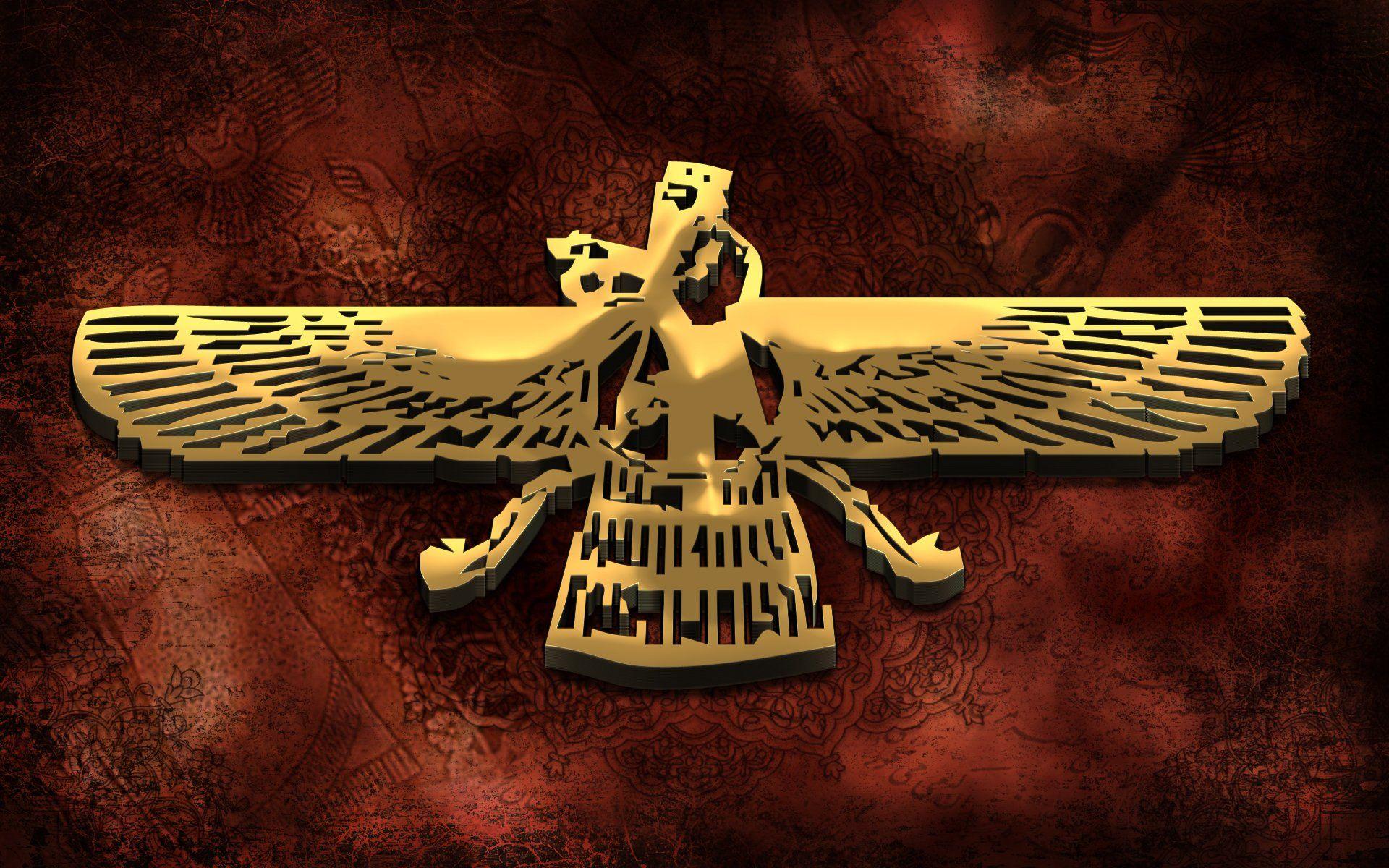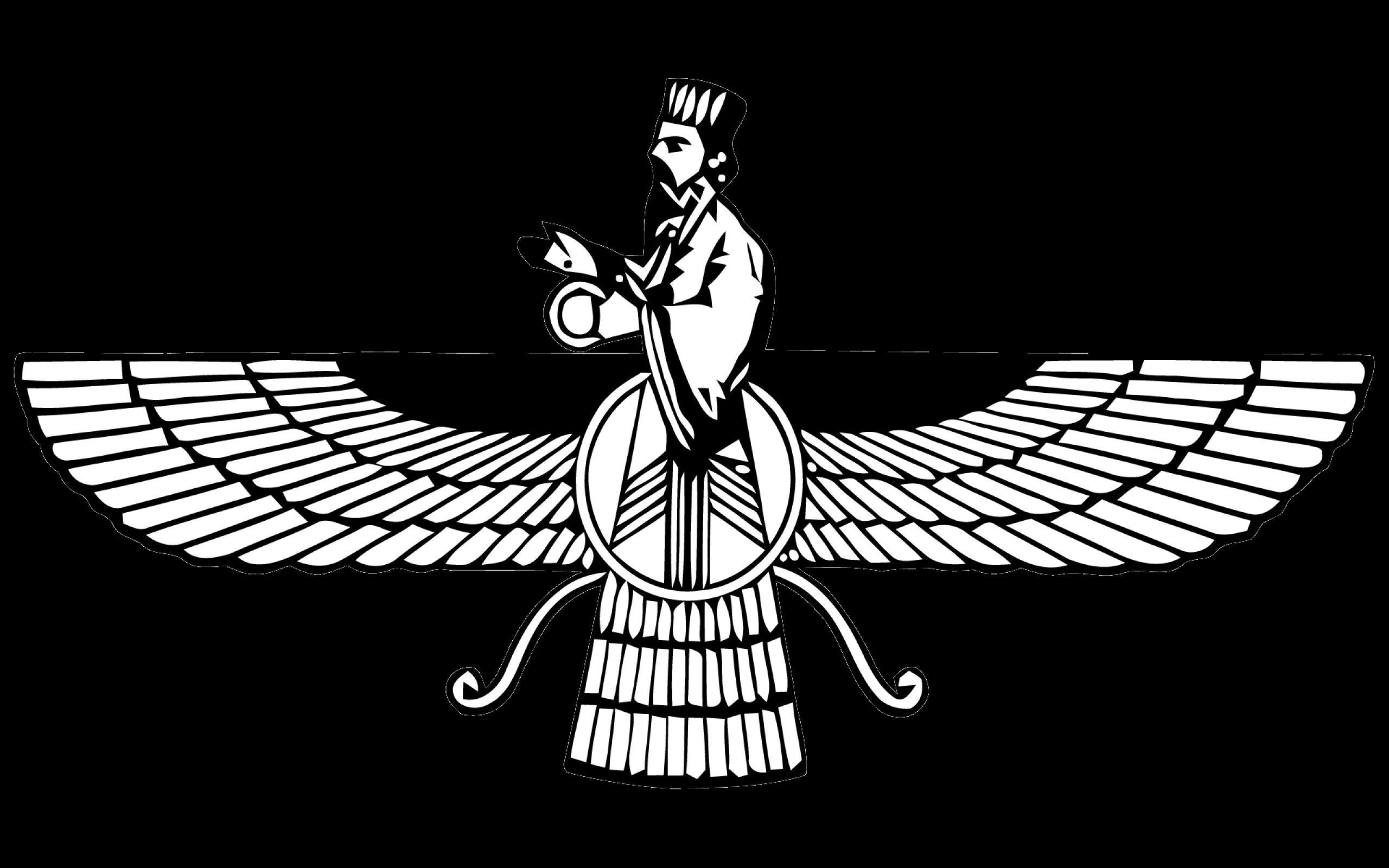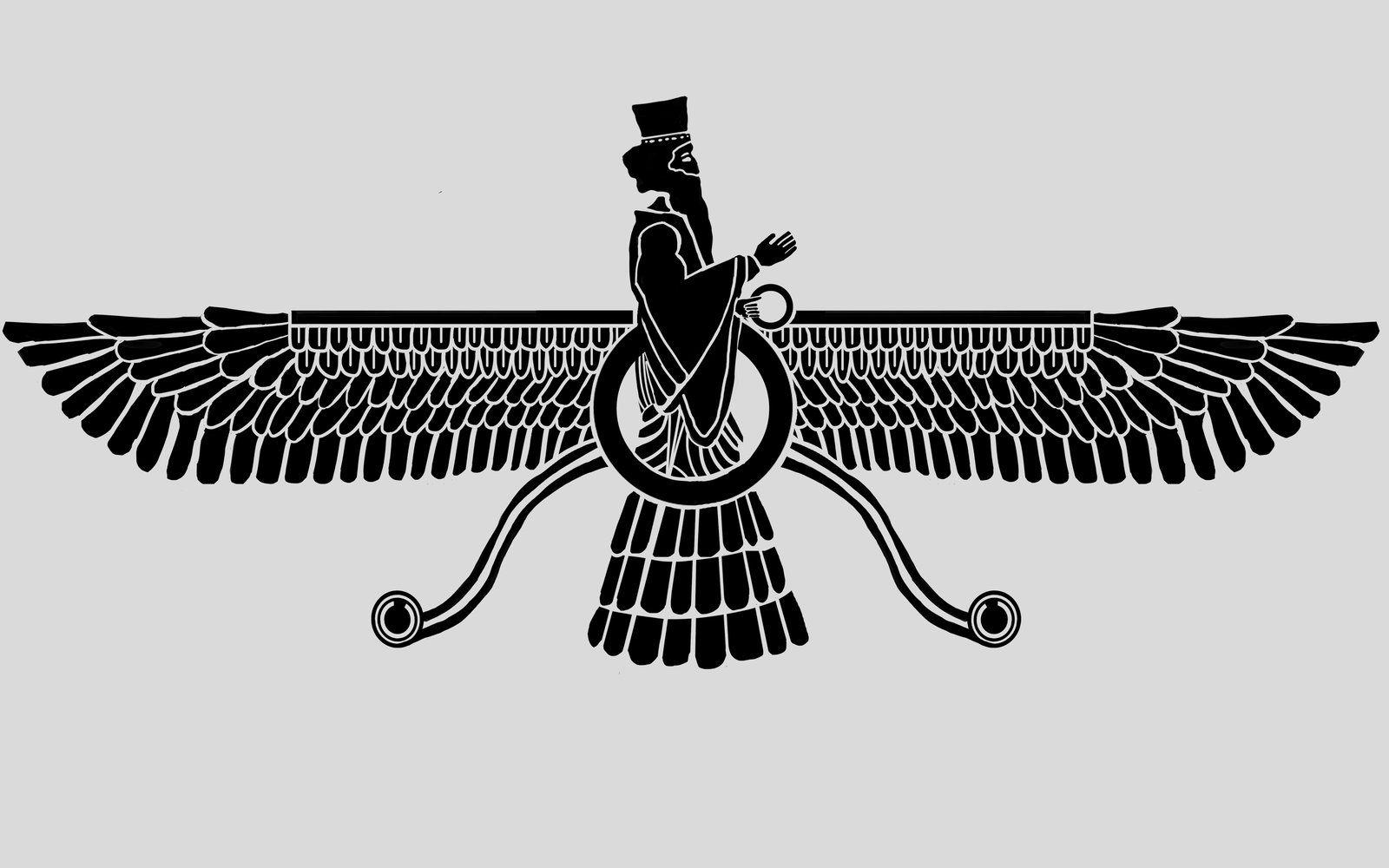Faravahar: Iran's Timeless Symbol Of Heritage & Wisdom
Unraveling the Faravahar: A Symbol's Journey Through Time
The journey of the Faravahar is as intricate and ancient as the history of Iran itself. To truly appreciate its depth, one must trace its linguistic evolution and its artistic lineage back to the dawn of civilization in the Near East. The Faravahar, as we know it, is a culmination of centuries of cultural exchange and symbolic adaptation.Etymological Roots and Pronunciation
The very name "Faravahar" carries a history within its syllables. The new Persian word فروهر is read as *foruhar* or *faravahar* (pronounced as *furōhar* or *furūhar* in classical Persian). Its linguistic roots delve deep into ancient Iranian languages. The Middle Persian forms were *frawahr* (recorded in Book Pahlavi as Prwhr) and *frōhar* (recorded in Pazend as 𐬟𐬭𐬋𐬵𐬀𐬭), which is a later form of the previous. Another Middle Persian form, *fraward* (Book Pahlavi, Frwrd), was directly derived from Old Persian. This linguistic evolution highlights the symbol's enduring presence and transformation through various periods of Persian history, indicating its continuous relevance across different eras and linguistic shifts.From Ancient Mesopotamia to Persian Identity
The visual origins of the Faravahar are not solely Persian but are deeply rooted in the ancient Near East. Accessible texts indicate that the origins of the oldest winged images and mythological winged animals must be traced to Mesopotamia and Iran, which were entwined with the Egyptian emblem in ancient Assyria. The ancient Iranian symbol is rooted in the winged sun symbol popular in ancient Egypt and Mesopotamia. The original Assyrian symbol depicted the deity Ashur in the center of the winged sun and usually included the tree of life. This powerful motif of a winged disc, often with a figure emerging from it, was a common representation of divinity, power, and protection across these ancient civilizations. Over time, as the Persian empires rose, they adapted and transformed this prevalent imagery, imbuing it with their own unique spiritual and nationalistic interpretations. The Faravahar, as a result, is an adaptation of the original symbol, which later became known as the Iranian national symbol. This process of adaptation is a testament to the dynamic cultural landscape of the ancient world, where symbols were often borrowed, reinterpreted, and given new life within different cultural contexts.The Faravahar's Historical Depictions and Evolution
The earliest tangible evidence of the Faravahar in its distinctly Persian form can be found etched into the very bedrock of Iranian history. The oldest existing examples of Faravahar exist as tomb engravings in Achaemenid historical sites, mainly on the tombs of Darius the Great and other Achaemenid kings. These monumental carvings, found in places like Naqsh-e Rustam and Persepolis, unequivocally establish the symbol's significance during one of Persia's most glorious periods. For instance, it has been depicted on the tombs of Achaemenid kings, such as Darius the Great. This placement on royal tombs suggests a profound connection to kingship, divine legitimacy, and the eternal spirit. Beyond these grand royal monuments, the Faravahar was also used on the coins of the Frataraka of Persis in the late third and early second BC centuries. This widespread usage, from monumental architecture to everyday currency, indicates its pervasive presence and importance in ancient Persian society. The symbol’s evolution from a purely religious or royal emblem to a broader representation is a gradual process, culminating in its modern role as a powerful symbol of the nation of Iran and more.Decoding the Faravahar: Elements of Profound Meaning
The Faravahar is not merely a decorative emblem; it is a profound philosophical and spiritual diagram, with each element carrying significant meaning, particularly within the context of Zoroastrianism and ancient Persian wisdom. While it is thought to represent Ahura Mazda, the god of Zoroastrianism, its interpretation has evolved, and it is also widely seen as a representation of the *fravashi* (guardian angel) or the human soul's progression. The figure inside is that of an old man, representing wisdom of age. This wise figure is central to understanding the Faravahar's message. Let's break down its key components: * **The Human Figure:** At the center of the Faravahar is the figure of an old man, often interpreted as representing wisdom gained through age and experience. This figure is not Ahura Mazda himself, but rather a representation of the human soul's journey towards perfection, or perhaps the *fravashi*, a divine essence or guardian spirit associated with each individual. It symbolizes the spiritual aspiration of humanity. * **The Wings:** There are two wings on two sides of the picture, which have three main feathers. These three feathers are universally understood to symbolize the core tenets of Zoroastrianism: * **Good Thoughts (Humata):** The commitment to thinking positively and constructively. * **Good Words (Hukhta):** The practice of speaking truthfully and kindly. * **Good Deeds (Hvarshta):** The act of performing virtuous and benevolent actions. These three principles form the moral compass for Zoroastrians and represent the path to spiritual elevation. * **The Three-Layered Tail Feathers:** Below the wings, the tail feathers are also depicted in three layers, symbolizing the opposite of the good thoughts, words, and deeds: bad thoughts, bad words, and bad deeds. This serves as a reminder of the negative influences one must strive to overcome. * **The Central Ring:** The ring in the center of the Faravahar, where the figure stands, is often interpreted as representing eternity, the eternal nature of the soul, or the cycle of reincarnation. It can also symbolize the covenant or promise that humanity has with the divine. * **The Two Streamers/Hands:** The two streamers extending from the central ring, one pointing upwards and the other downwards, represent the two opposing forces in the universe: Spenta Mainyu (the benevolent spirit) and Angra Mainyu (the malevolent spirit). The figure's hands are often depicted pointing upwards, indicating a choice towards the good, or a reaching out towards Ahura Mazda. This symbolizes the eternal struggle between good and evil, and humanity's free will to choose the path of righteousness. Collectively, these elements make the Faravahar a powerful visual sermon, guiding individuals towards a virtuous life and embodying the core philosophical principles of ancient Persian thought and Zoroastrianism.Faravahar and Zoroastrianism: A Spiritual Connection
The Faravahar is the primary symbol of Persian Zoroastrianism, and its connection to this ancient religion is profound and inseparable. Zoroastrianism, founded by the great Iranian spiritual leader Zartosht (Zoroaster), introduced a monotheistic framework to the ancient civilizations of the Persian Empire. When Zarathustra introduced Zoroastrianism as one religion to unite the ancient civilizations of the Persian Empire (the part which is called the Middle East today and also some parts of today’s Africa and Asian countries), they already had thousands of years of history of ancient civilizations known to them. This rich historical backdrop provided fertile ground for the adoption and reinterpretation of existing symbols. The Faravahar is often considered the eternal symbol of Zoroaster, embodying the essence of his teachings. While it is thought to represent Ahura Mazda, the supreme being in Zoroastrianism, it is more accurately understood as a visual representation of the human soul's spiritual journey and the core principles of the faith. On some occasions, the Faravahar symbol has been said to symbolize a guardian angel (a *fravashi*), which are divine entities that guide and protect individuals. This interpretation reinforces the symbol's role as a moral and spiritual compass. The Faravahar encapsulates the dualistic philosophy of Zoroastrianism, particularly the concept of *Ahura Mazda, Faravahar, Spenta Mainyu*. Ahura Mazda represents the wise Lord, the creator of goodness. Spenta Mainyu, the benevolent spirit, is often contrasted with Angra Mainyu, the destructive spirit. The Faravahar, with its elements emphasizing choice and moral conduct, perfectly illustrates the human responsibility to align with Spenta Mainyu and strive for good thoughts, words, and deeds in the ongoing cosmic struggle between good and evil. It is a constant reminder of the Zoroastrian way of life that individuals try to achieve, emphasizing personal responsibility and ethical living.The Pahlavi Dynasty and the National Embrace of Faravahar
While the Faravahar's roots are ancient, its widespread recognition as a national symbol of Iran is a relatively modern development, largely attributed to the Pahlavi dynasty. It was the Pahlavi dynasty that adapted the Faravahar as the national symbol of Iran. This strategic adoption was part of a broader effort by the Pahlavi shahs to emphasize Iran's pre-Islamic heritage and create a strong sense of national identity distinct from its Islamic past. By linking the modern state to the glorious Achaemenid Empire, the Pahlavi regime sought to foster a sense of pride and continuity among Iranians. From the start of the 20th century, the Faravahar icon found itself in public places and became a known icon amongst all Iranians. This move helped to popularize the symbol beyond its religious context, transforming it into a secular emblem of Iranian heritage and culture. Its depiction on official buildings, monuments, and even everyday items during the Pahlavi era solidified its place in the national consciousness. This period marked a significant turning point, elevating the Faravahar from a primarily religious or historical artifact to a powerful emblem representing the entire Iranian nation.Faravahar in Contemporary Iran: A Living Legacy
In contemporary Iran, the Faravahar is prevalent in everyday life, demonstrating its enduring power and adaptability. It is not confined to historical sites or religious ceremonies but has seamlessly integrated into the modern cultural landscape. This ubiquitous presence underscores its status as a symbol that resonates deeply with the Iranian people, regardless of their religious beliefs.Cultural Ubiquity and Modern Adaptations
Many modern buildings in Iran display the Faravahar symbol, reflecting a continuous appreciation for its aesthetic and symbolic value. Beyond architecture, the Faravahar has found its way into personal expression and fashion. Nowadays, Iranians wear the Faravahar icon as a pendant, which has become a cultural symbol that characterizes Iran (Persia). This widespread practice of wearing the Faravahar as jewelry is a testament to its cultural significance, making it the most worn pendant among Iranians. Furthermore, Iranians use this symbol a lot in making their accessories, from keychains to decorative items. This integration into everyday objects signifies that the Faravahar is not just a relic of the past but a living, breathing part of modern Iranian identity. Here, scenes from Persepolis with the Faravahar taking prime position are immensely popular, often appearing as artwork or decorative motifs in homes and public spaces. The winged symbol appears here sometimes above the traditional Nowruz tray, the Haft Seen, and at other times it features prominently on or above reliefs from ancient Persepolis, especially during the Persian New Year celebrations, further cementing its role in cultural festivities.Faravahar as a Symbol of National Identity
Whether it is meant to represent the Iranian nation, or the way of life that Zoroastrians try to achieve, the Faravahar is a powerful symbol that still means a lot to many people today. It has become a secular national symbol, transcending its religious origins to represent a broader sense of Iranian heritage and pride. The Faravahar, a symbol deeply rooted in Persian identity and Zoroastrianism, is perhaps Iran’s most recognizable symbol. The Faravahar is also popular as a symbol of Iranian national identity amongst the Iranian diaspora worldwide. It serves as a visual shorthand for their roots, a connection to a rich and ancient civilization that predates many contemporary national identities. In a world where cultural identity can be fluid, the Faravahar offers a stable, recognizable anchor to Iranian heritage.Beyond Borders: Faravahar's Global Resonance
The resonance of the Faravahar extends far beyond the geographical borders of Iran. For the millions of Iranians living abroad, the Faravahar serves as a potent emblem of their cultural heritage and national identity. It is a visible link to their homeland, a reminder of their roots, and a symbol of pride in their ancient civilization. This is evident in various digital and artistic expressions, such as "Farvahar (the Persian symbol) that all > get wallpaper," or images like "1600x1000 from Iran to America." The sentiment captured in phrases like "3840x2160 even if the skies were shorter than my knees, I wouldn't kneel" often accompanies imagery of the Faravahar, underscoring its association with resilience, defiance, and unwavering spirit. The symbol's presence in digital art, wallpapers (e.g., "Persepolis HD wallpaper, gray highrise buildings, Asia, Iran, city, clouds, stormy, ancient, Persian, history, Persepolis, Parsa, HD wallpaper," or "Find and save ideas about Farvahar wallpaper on Pinterest"), and cultural expressions by the diaspora highlights its role as a unifying motif. It represents not just a historical past but a living, evolving identity that connects Iranians globally. It speaks to a shared legacy of wisdom, perseverance, and cultural richness that continues to inspire and unite.Conclusion
The Faravahar stands as a testament to the enduring power of symbols. From its ancient Mesopotamian and Egyptian origins, through its adoption and transformation by the Achaemenid Empire, to its modern-day status as a national and cultural icon, the journey of the Faravahar Iran is a captivating narrative of continuity and adaptation. It embodies the profound wisdom of Zoroastrianism, the ancient aspirations of the Persian people, and the resilient spirit of a nation. Whether interpreted as a representation of Ahura Mazda, a guardian *fravashi*, or simply the universal human striving for good thoughts, words, and deeds, the Faravahar remains a deeply meaningful emblem. Its presence on ancient tombs, modern buildings, and personal pendants underscores its timeless relevance. It is a powerful reminder that symbols, when imbued with rich history and profound meaning, can transcend generations and continue to inspire, unite, and define an entire civilization. We invite you to delve deeper into the rich history of Iran and its symbols. What does the Faravahar mean to you? Share your thoughts in the comments below, or explore more articles on ancient Persian culture on our site!
Farvahar Wallpapers - Top Free Farvahar Backgrounds - WallpaperAccess

Farvahar Wallpapers - Top Free Farvahar Backgrounds - WallpaperAccess

Farvahar Wallpapers - Top Free Farvahar Backgrounds - WallpaperAccess